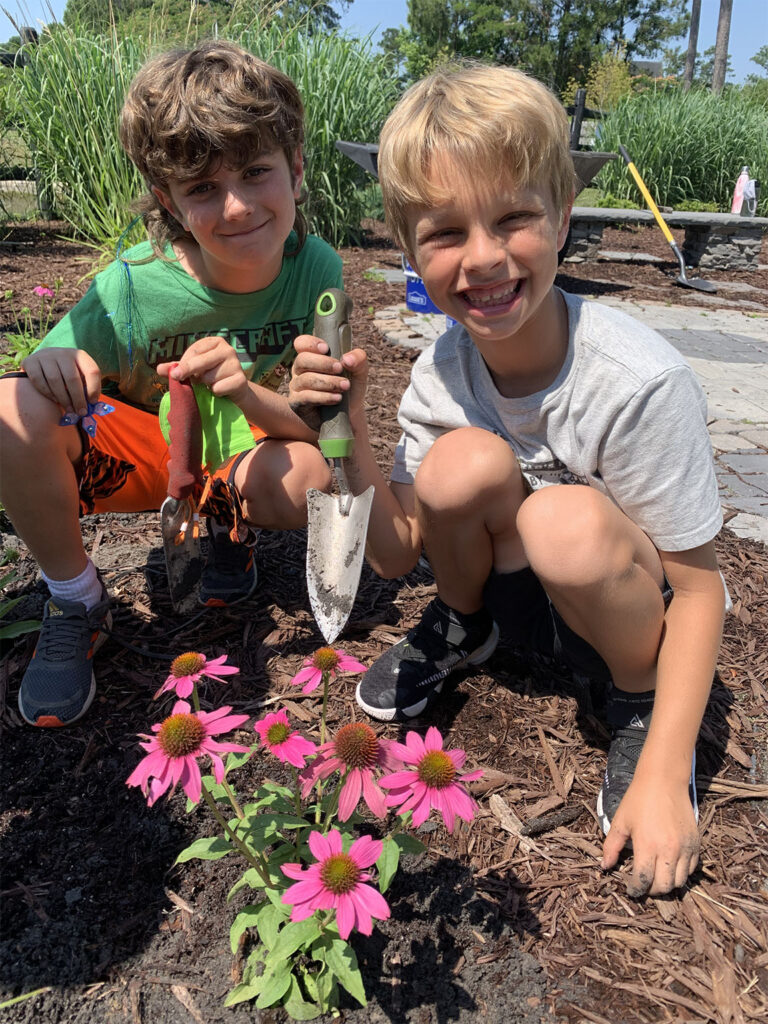By Shelagh Clancy
Students investigate a butterfly garden and pollinator garden. The playground is shaded by indigenous River Birch (Betula nigra) and Common Wax-myrtle (Morella cerifera). Native wetland plants surround retention ponds. Wherever you look at Friends School of Wilmington, native plants are front and center.
“As a Quaker School, we draw from a long history of caring for the environment. And we consider environmental stewardship to be one of our most important missions,” says Karen Linehan, Friends School of Wilmington environmental education coordinator. Quakers believe it’s important to leave the world a better place, and this goal is woven into the fabric of education at the school, entwining native plants, learning, and allies throughout the community.
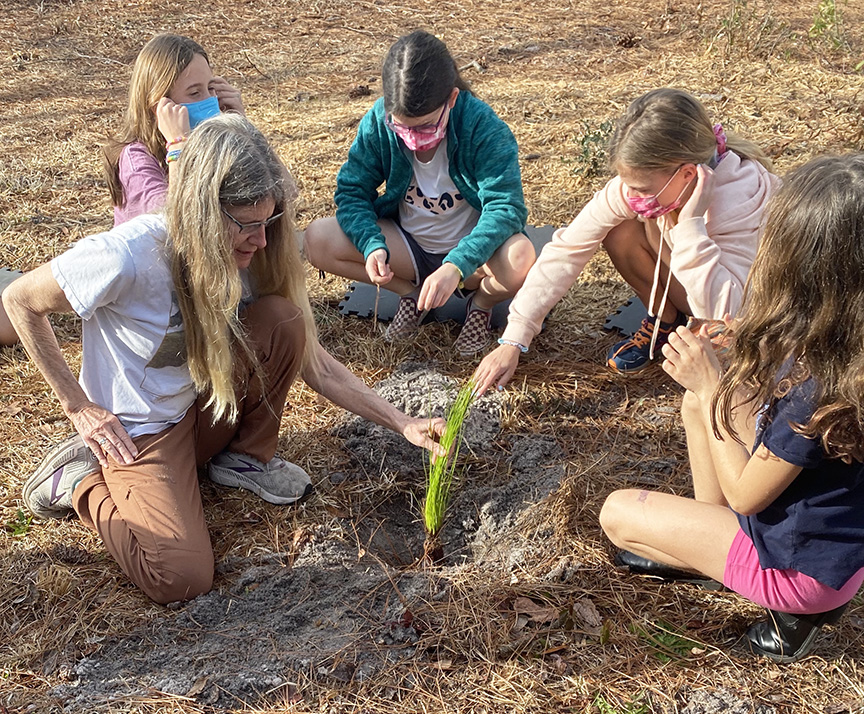
The wild as a classroom
“Conserving and growing native plants is a priority, especially in light of increasing development and the related loss of habitat in the Wilmington area,” Linehan says. The native gardens benefit wildlife and at the same time offer learning opportunities for students. “When we plant milkweed for monarch butterflies or American Beautyberry for pollinators and birds, we also create a foundation for lessons across the curriculum. In this way we expand the walls of our classrooms to include the outdoors.”
Native plantings are set throughout Friends School campus, comprising native shrubs and trees, a large butterfly garden, a native pollinator garden, and native wetland plants. A natural wetland and remnant pocosin serve to shelter Titi ( Cyrilla racemiflora), Inkberry (Ilex glabra), chokeberry (Aronia sp.), Groundsel Tree (Baccharis halimifolia), and sphagnum moss.
Last year, Friends School purchased 2.8 acres of adjoining land that was once a family farm. The property includes mixed forests of Longleaf Pine (Pinus palustris), Laurel Oak (Quercus laurifolia), Southern Magnolia (Magnolia grandiflora), holly (Ilex sp.), Sassafras (Sassafras albidum), and Wild Olive (Cartrema americana). Large grassy areas offer space for new garden projects. To Linehan, the property offers myriad educational opportunities.
“We are developing trails and renovating the original cottage to serve as an education center where teachers and students have outdoor space to learn, play, garden, and engage with nature,” she says. A new native garden area for the front of the cottage will be installed this fall. A ribbon-cutting to celebrate the opening of this property, named the Longleaf Center for Environmental Learning, is planned for Oct. 14.
Teachers, staff, and students help maintain the plantings. It’s part of the curriculum.
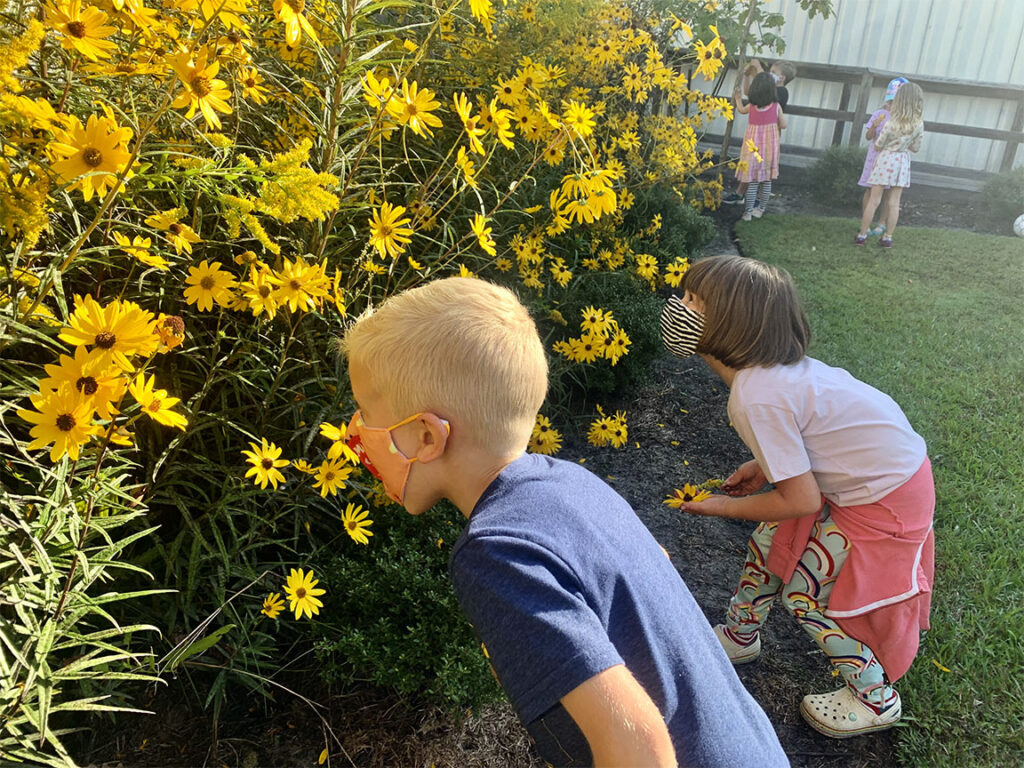
“When we involve our students, we create a deeper engagement and a stronger sense of stewardship,” Linehan says. Structured tasks and informal observations in garden areas create opportunities for learning. Allowing students to independently interact with garden areas during recess is especially powerful.
“When a student discovers a camouflaged praying mantis ‘stalking’ a Passionflower, it may be the most memorable moment of that student’s school year. The simple act of garden maintenance and observation sparks the possibility of a life-changing event.
“Our ultimate goal is to foster a lifelong conservation ethic for all of our community members—students, faculty, families, and anyone who visits our campus,” she says.
A community lends a hand
The ongoing landscape project has been in progress for 20 years. School faculty and parents, and partnerships throughout North Carolina, have helped create gardens and support a focus on native plants.
“Our new butterfly garden was designed by Friends School parent Sheri Chisholm of Flora Landscapes,” Linehan says. “Sheri grew many of the plants in her greenhouse. Patrick Bradshaw, a faculty member and local native plant educator, designed our new pollinator garden with native plants sourced from Joyce Huguelet of Going Native Gardens, as well as from his own garden.”
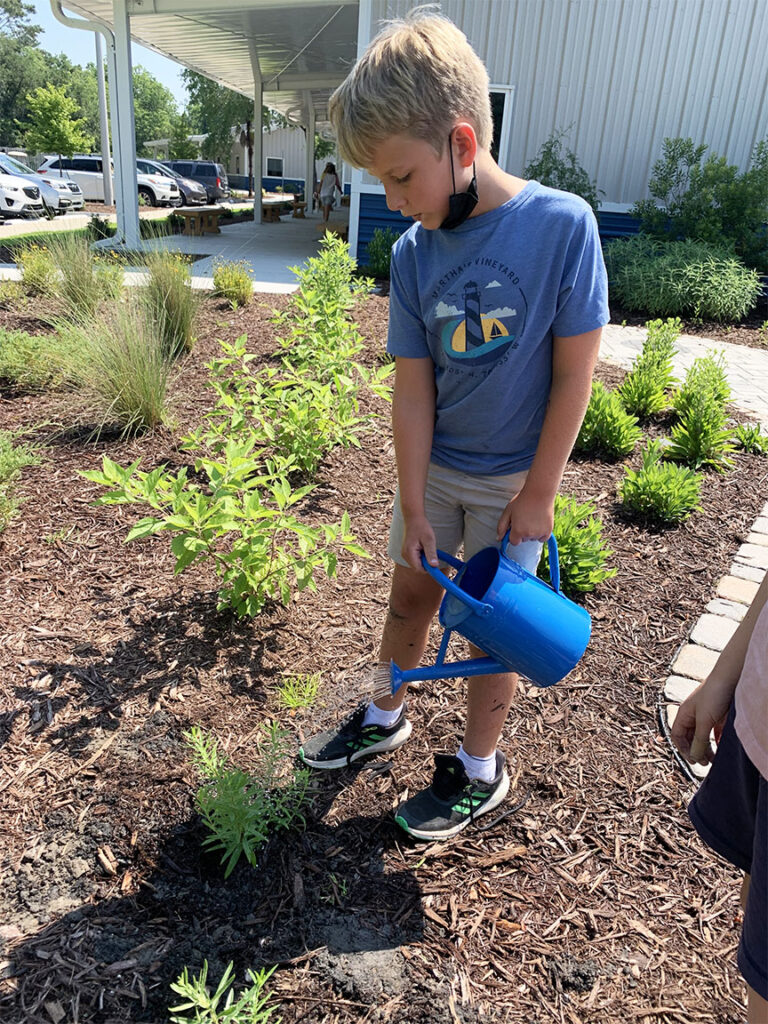
The school partners with professors and students in the University of North Carolina Wilmington Department of Environmental Sciences. Friends School has enjoyed grants from the North Carolina Museum of Natural Sciences, Keep North Carolina Beautiful, the Cape Fear Garden Club, the North Carolina Outdoor Heritage Advisory Council, the North Carolina Sustainable Forestry Initiative, and others.
The North Carolina Native Plant Society helps
“We appreciate the friendship, support, and expertise of Charley Winterbauer and North Carolina Native Plant Society,” Linehan says. And the school continues to seek alliances with area conservation leaders. Collaboration is part of the education.
Looking ahead
As environmental education coordinator, Linehan supports teachers and facilitates weekly lessons. She reaches out to the community to envision the new green space and Environmental Education Center. “We’re excited to partner with local nonprofits and expand our outreach programs into the lower Cape Fear region,” she says.
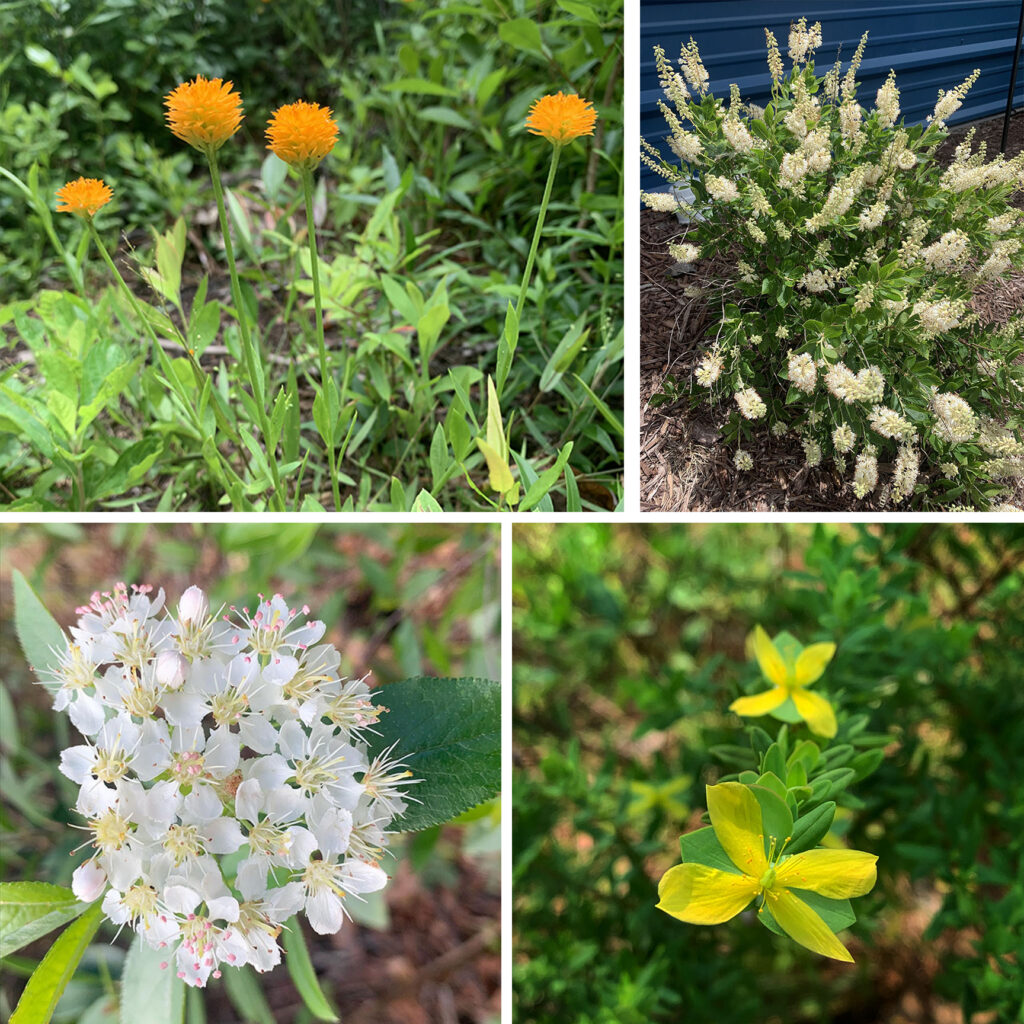
With the recent unification of the campus and purchase of adjoining green space, Friends School will pursue their stewardship mission on a grander scale. In the works are a native plants committee of faculty, staff, and parents that will look at each area of the campus to determine maintenance, future garden development, removal of invasive plants, and the replacement of non-native landscape plants with natives. The school is developing a three- to five-year plan to gradually transform the campus into an ecological sanctuary with an emphasis on native plants and wildlife habitats.
Friends School mission
Friends School of Wilmington serves children 18 months through eighth grade from a broad range of backgrounds. Linehan says the school mission statement best conveys their presence:
We believe the world needs passionate, lifelong learners who act with courage, integrity, and love. Inspired by that need, and the Quaker values of peace, equality, and care for the earth, Friends School of Wilmington is a vigorous academic community committed to educating the whole child.
To learn more about Friends School of Wilmington, go to www.fsow.org. For more information about the Oct. 14 ribbon-cutting at the Longleaf Center for Environmental Learning, email Linehan at karenl@fsow.org.
By Shelagh Clancy
Native Plant News – Fall 2022
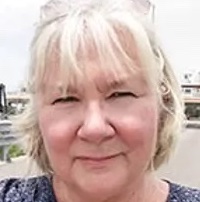
Shelagh Clancy is a member of the Southeastern Coastal Area Chapter of the North Carolina Native Plant Society and is active with the Coastal Land Trust, which preserves land along North Carolina’s coast. She is a freelance editor and designer and owner of Sea Leaf Book Editing (sealeafbooks.com).
Copyright © 2022 North Carolina Native Plant Society. All rights reserved.
